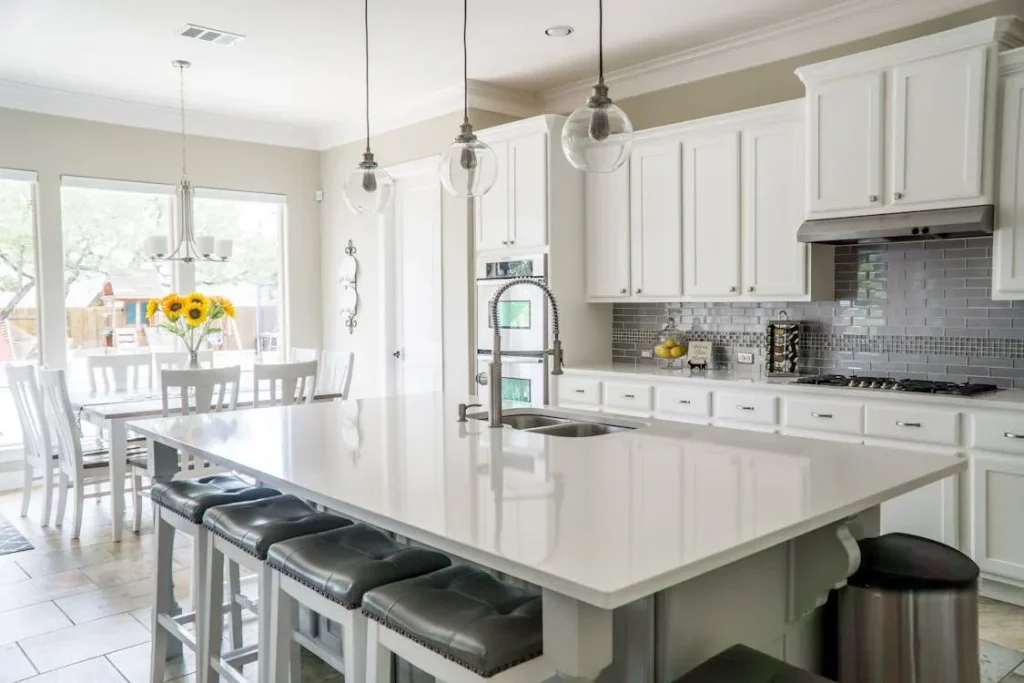Ever started a home project thinking it would take “just one weekend,” only to find yourself surrounded by dust, receipts, and regret three weeks later? You’re not alone, notes Keyrenter Premier company. In an age where before-and-after videos go viral and renovation shows speed through remodels in under 45 minutes, it’s easy to get the wrong idea about what home improvement actually involves. In this blog, we will share what truly works—and what tends to backfire—when it comes to upgrading your space.
Related insight: This article dives even deeper into the topic.
Start With What You Use Every Day, Not What Looks Good Online
One of the most common mistakes homeowners make is chasing trends instead of function. It’s easy to get hypnotized by Pinterest-ready kitchens or influencer-approved color palettes, but what works for the camera doesn’t always hold up in daily life. Matte black fixtures look sleek until hard water hits them. Open shelving turns into a dust trap within a month. That bold tile pattern may feel fresh at first, but living with it is another story.
The smart move is to focus on how you use your home. Upgrade the things you touch constantly—doorknobs, faucets, cabinet handles, light switches. Invest in flooring where people actually walk. Prioritize layouts that make movement easier, not just prettier. A smaller change that solves a real pain point will pay off long after the novelty of something trendy wears off.
People often forget that aesthetics don’t clean themselves, and most home features, no matter how beautiful, become background noise over time. What sticks is whether the space helps or hinders your day-to-day life.
Efficiency Pays—But Only If You Pick the Right System
Energy costs are a growing concern, especially with inflation hanging around longer than expected and utility bills ballooning unpredictably across the country. Homeowners are turning to smarter appliances and better insulation to fight back. But not all upgrades are equally effective, especially when it comes to heating and cooling.
Many people skip straight to buying whatever system sounds high-tech without doing the groundwork to assess actual needs. Which leads to the real question, which AC is right for your home?
The answer depends on your square footage, insulation, local climate, and how much of the house you’re cooling regularly. A central system works well if you’re cooling the whole space and want clean lines with no visible units. A ductless mini-split might serve better in older homes where ductwork is messy or nonexistent. Window units make sense for single rooms but fail on whole-home comfort. Portable systems promise convenience but often lack the muscle needed to justify their noise.
Installing the wrong system—too big or too small—leads to inefficiency and constant cycling, which doesn’t just hike your bill but shortens the unit’s life. Matching the system to the home isn’t just a technical detail. It’s the difference between steady comfort and year-round frustration.
Before you invest, talk to a qualified tech, not just the salesperson at the appliance store. Get a load calculation. Understand SEER ratings. The cost of doing it wrong isn’t always immediate—but it shows up on every bill afterward.
DIY Has Limits—Respect Them
YouTube can teach you how to fix a toilet, patch drywall, or install shelves. It can also convince you that you’re qualified to rewire a ceiling fan or demo a wall with a hammer and good intentions. The problem isn’t ambition—it’s scale.
DIY makes sense when the stakes are low and the result isn’t structural. Paint? Go for it. Basic trim? Sure. Hanging a light fixture with clear access and a shutoff breaker? With caution, yes. But too many homeowners overreach, chasing savings and ignoring risk. Plumbing mistakes can flood a kitchen overnight. Electrical errors can burn a house down. Those aren’t “learning moments.” They’re expensive setbacks.
When in doubt, calculate the actual cost of your time, tools, and the margin for error. Professionals aren’t just charging for the work—they’re charging for the years of avoiding the mistakes you’re about to make.
The trick is knowing your ceiling. Try the small things. Get confident with repairs. But know when to hand the reins to someone who’s done it 500 times before lunch.
Budgets Break When You Ignore the Boring Stuff
No one gets excited about spending money on joists, subfloor leveling, or fixing crawlspace drainage. But that’s where your renovation either lasts or quietly fails.
A lot of budget blowouts happen when people skip inspections or put off prep work. You rip up the floor only to discover rot. You start a bathroom redo only to find ancient plumbing that can’t handle new fixtures. These aren’t surprises—they’re consequences of skipping due diligence.
Start every project with a reality check. Pull permits if needed. Bring in a pro for a one-time consult. Spend on the inspection. It’s cheaper than undoing damage.
The boring stuff also includes labor logistics. Booking contractors with good reputations often means waiting. Rushing to hire whoever’s available next week can turn a solid plan into a salvage job. Timelines matter, but quality matters more.
And yes, timelines slip. Always add buffer days to your plans. Renovation is less like a recipe and more like a weather forecast—roughly right, occasionally wildly off, and almost always changing by the hour.
Trends Fade. Function Holds.
There’s nothing wrong with loving design. But any trend strong enough to dominate a decade will eventually hit the backlash stage. Remember beige everything? Then it was gray everything. Now it’s green cabinets and terrazzo. Give it five years.
The point isn’t to avoid trends. The point is to avoid building your house around them. Choose timeless bones and let the trends live in details—paint, fixtures, textiles. That way, updates don’t require a sledgehammer and another drained savings account.
You want a home that can evolve, not one locked into a moment that’ll feel outdated before the grout dries.
Home improvement looks glamorous on screen, but in real life, it’s a messy, delayed, and deeply human process. Things go wrong. Costs creep. Projects stall. But when it’s done right—when function leads, and you build around how you actually live—it changes more than just the space. It changes how that space supports you.
And that, done well, always works.
Discover fresh content every day—visit 2A Magazine.







